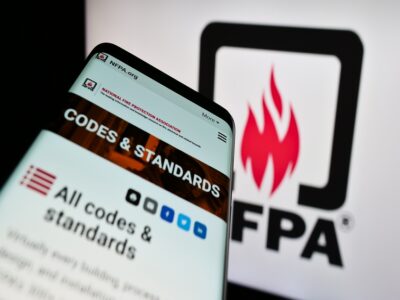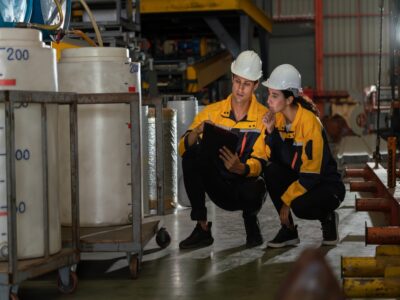
NFPA 664: Standard for the Prevention of Fires and Explosions in Wood Processing and Woodworking Facilities
National Fire Protection Association (NFPA) 664 is relevant to all industrial facilities that process wood or manufacture wood products. It also covers facilities handling cellulose fiber as a substitute for/ or additive to wood fiber, as well as those that process wood, creating wood chips, particles, or dust.
We explain here what NFPA 664 is all about, its relevance to the wood/ wood processing sector, and how Stonehouse can assist your business with compliance.
What is NFPA 664?
NFPA 664 is a technical standard prepared by the National Fire Protection Association (NFPA) that provides information to help you identify and manage fire, flash fire, and explosion hazards of combustible dusts and particulate solids found in the wood and wood processing industries.
The purpose of the standard is to provide minimum requirements for the design, operation, and maintenance of woodworking and wood processing facilities for the safety to life, property protection, and mission continuity from fire and explosion.
NFPA 664 is an industry-specific standard that is referenced by NFPA 652, Standard on the Fundamentals of Combustible Dust. It sits alongside other industry- or commodity-specific standards such as NFPA 61, NFPA 484, NFPA 654, and NFPA 655 and that cover such industries as agricultural and food processing, metals, chemicals, and sulfur.
Understanding dust explosions
Dust cloud flash fires and explosions occur when combustible dust is dispersed in the air and encounters a source of ignition. Examples of sources of ignition include sparks/ glowing wood embers, impact and friction sparks, self-heating wood dust and discharges of static electricity. Any process plans containing combustible wood dust is at risk, including dust collection systems, cyclones, dryers, heating systems…. Dust explosions can happen in and around wood processing equipment such as powder conveyors, hoppers, silos, mixers, blenders, dryers, sifters, dust collectors/ bag houses and packaging machines.
Factors required for a dust explosion:
- A dispersed combustible dust (above a certain Minimum Explosible Concentration),
- An oxidant – usually just air,
- A sufficiently energetic ignition source – for example electrostatic spark, electrical spark, hot surface, material thermal decomposition – or simply a flame
Your responsibility under NFPA 664
NFPA 664 states that the facility owner/operator is responsible for ensuring that the facility and systems handling combustible particulate solids are designed, installed, and maintained in accordance with the requirements of this standard as well as those of NFPA 652. Wood particulates in a facility have to be assessed for their hazards in accordance with NFPA 652.
You should:
- Identify all credible fire, flash fire, and explosion hazards associated with your facility,
- Assess the consequences of credible fire, flash fire, and explosion hazards,
- Then manage all credible fire, flash fire, and explosion hazards you have found, and,
- Communicate these hazards to all personnel that could be affected.
You will certainly need to perform a DHA (Dust Hazards Analysis), record the findings, and implement the identified recommendations.
How Stonehouse can help you with NFPA 664
Our specialist fire and explosion consultants can bring to bear their knowledge, experience, and practical approach to guide you along the whole journey from Dust Hazards Analysis (DHA) to hazard elimination and control of risk. Our objective: to ensure you move to compliance in a safe, cost effective, and efficient way. Specifically, we can assist with:
- The Dust Hazards Analysis (DHA): DHA is a systematic review to identify and evaluate potential dust fire, flash fire, and explosion hazards and is a requirement of NFPA 652 and NFPA 664. Your DHA must be conducted by someone with proven expertise in hazards associated with handling and processing of combustible particulate solids. Read more about Dust Hazards Analysis. A DHA undertaken by our dust explosion specialists at Stonehouse Process Safety will….
- Provide independent, cost-effective advice on avoidance/control of explosible dust hazards, including dust accumulations, design concept, operation, maintenance, local exhaust ventilation, and housekeeping.
- Consider elimination and control of ignition sources, including heat sources, friction and impact sparks, electrical arcs and sparks, self-heating, and electrostatic discharges, and more.
- Review existing protection and isolation measures against the consequences of an explosion and advise on explosion protection and isolation options.
- Review avoidance/control of oxidant by design of dilution or even inert gas systems, considering Limiting Oxidant Concentration (LOC) values of powders processed.
- Lab Combustibility Testing of Your Materials: Through screening tests we can identify combustible dusts and fully characterize your materials when necessary. More information on our laboratory dust explosion tests is available here.
- Process Safety Management Programs: We can help you develop the written management systems that are specifically required by NFPA 652 for the on-going management of dust fire, flash fire, explosion hazards. You can learn more about our work in Process Safety Management here.
- Training/Competency Building: We can train your operating, engineering, and management staff to validate and assure the levels of understanding and experience exist within your workforce to implement and maintain the necessary on-going requirements of NFPA 652 and NFPA 664. You can learn more about our process safety training courses here.
- On-going Review and Update: NFPA 652 and NFPA 664 require that each DHA to be reviewed and updated at least EVERY 5 YEARS. You can learn more about our DHA review/ update service here.
For more information on how our specialist dust explosion consultants can help your organization with NFPA 664 compliance, please contact us on 609-455-0001 or email us at: [email protected].

Get in touch
To learn more about our expertise and services in dust explosion prevention & mitigation, call us at +1 609 455 0001 or email us at [email protected] today.
We also offer tailored virtual and in-company process safety training programs on Dust Explosions, Static Electricity and HAC (Hazardous Area Classification) and more. Find further information here.







